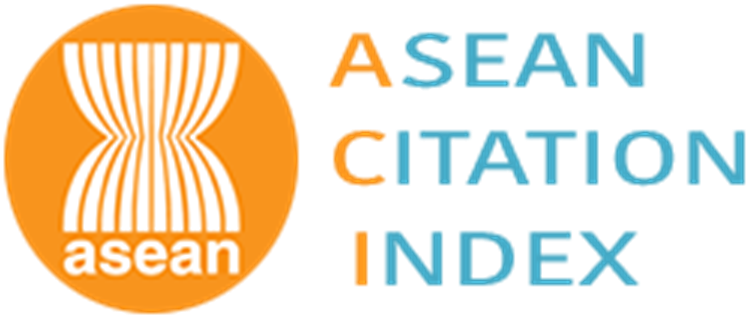การวิเคราะห์กระแสเงินสดของบริษัทก่อสร้างบนเงื่อนไขการจ่ายเงินโครงการก่อสร้างภาครัฐ
Analyzing Cash Flow Management of Contracting Firms on Payment Conditions in Public Construction Projects
Abstract
การวิเคราะห์กระแสเงินสดโครงการก่อสร้างมีความสำคัญอย่างยิ่ง การวิเคราะห์กระแสเงินสดเข้าโดยทั่วไปใช้วิธีการคำนวณต้นทุนจากค่าใช้จ่ายที่ผู้รับเหมาใช้ในการดำเนินโครงการในแต่ละช่วงของการกำหนดจ่ายเงินงวดงาน อย่างไรก็ตามสัญญาโครงการก่อสร้างภาครัฐส่วนใหญ่กำหนดการจ่ายเงินงวดงานโดยผู้รับเหมาต้องดำเนินกิจกรรมที่กำหนดให้แล้วเสร็จก่อนการขอเบิกเงินงวดงาน ซึ่งหากไม่พิจารณาถึงเงื่อนไขการจ่ายเงินดังกล่าวอาจทำให้บริษัทผู้รับเหมาเกิดสภาวะการขาดแคลนเงินสดในระหว่างดำเนินโครงการ บทความนี้มีวัตถุประสงค์เพื่อวิเคราะห์กระแสเงินสดของบริษัทก่อสร้างตามเงื่อนไขการจ่ายเงินโครงการก่อสร้างภาครัฐ และเปรียบเทียบผลการวิเคราะห์กับวิธีทั่วไป โดยการเก็บรวบรวมข้อมูลเงื่อนไขการจ่ายเงินของบริษัทผู้รับเหมา และเงื่อนไขการจ่ายเงินของเจ้าของโครงการ จำนวน 3 บริษัท ซึ่งประกอบด้วย บริษัทขนาดเล็กขนาดกลาง และขนาดใหญ่ ด้วยวิธีการสัมภาษณ์เบื้องลึกและวิเคราะห์เอกสาร และนำข้อมูลมาวิเคราะห์กระแสเงินสดออกกระแสเงินสดเข้า และกระแสเงินสดโครงการ การวิเคราะห์กระแสเงินสดเข้าแบ่งออกเป็น 2 รูปแบบ คือ รูปแบบที่ 1 วิธีการคำนวณแบบทั่วไป และรูปแบบที่ 2 วิธีการคำนวณแบบเงื่อนไขการจ่ายเงินงวดงาน ผลการศึกษาพบว่ามูลค่ากระแสเงินสดเข้าของโครงการในแต่ละช่วงเวลาของทั้ง 3 บริษัท มีความแตกต่างกัน เนื่องจากกำหนดการจ่ายเงินงวดงานที่ไม่สม่ำเสมอจึงทำให้บางช่วงเวลาไม่มีกระแสเงินสดเข้า มูลค่าเงินเบิกเกินบัญชีสูงสุดที่คำนวณด้วยรูปแบบที่ 2 มากกว่ารูปแบบที่ 1 ร้อยละ 16, 2.46 และ 1.83 สำหรับบริษัทผู้รับเหมาขนาดเล็ก ขนาดกลาง และขนาดใหญ่ ตามลำดับ จากผลการวิเคราะห์แสดงให้เห็นว่าบริษัทผู้รับเหมาก่อสร้างต้องระมัดระวังในการวิเคราะห์กระแสเงินสดโครงการอย่างมาก โดยเฉพาะอย่างยิ่งบริษัทขนาดเล็กที่มีโอกาสเกิดสภาวะขาดสภาพคล่องอย่างรุนแรงและนำไปสู่การเลิกกิจการได้
In construction project, the cash flow analysis is crucial. The cash inflows are typically estimated using a multiplier to add the pro rata share to the periodical disbursement. Most of contracts in public sector, however, determine the payment conditions as progress payment that paid after the assigned activities done. This paper aims to analyze cash flow management of construction firms on payment conditions in public sector and to compare the results with the conventional method. Three construction firms comprising small, medium, and large size were studied by collecting their payment conditions paid for cash disbursement and received from project execution. The in-depth interview and document analysis were used. Project cash flows were analyzed by estimating cash outflows and inflows. Two approaches of cash inflows calculation were demonstrated the experiments consisting of the traditional and the conditional approach as pattern 1 and 2 respectively. The results showed that amount of cash inflow of all firms was different in each period. This is because inconsistent payment schedule caused low cash inflow or none in some periods. The maximum amount of overdraft calculated by pattern 2 was greater than that of pattern 1 which was 16%, 2.46% and 1.83% for small, medium and large firm respectively. From the analysis, it can be seen that the construction company should be systematic in analysis of project cash flow. Especially, small firms might have a chance of seriously inadequate cash, leading to bankruptcy.
Keywords
[1] J. Argenti, Corporate Collapse. Maidenhead: McGraw-Hill, 1976.
[2] S. Slatter, Corporate Recovery: Successful Turnaround Strategies and Their Implementation. Singapore: Penguin, 1984.
[3] J. Lowe, “Insolvency in the UK construction industry,” Journal of Financial Management of Property and Construction, vol. 2, no. 1, pp. 83–110, 1997.
[4] D. Arditi, A. Koksal, and S. Kale, “Business failures in the construction industry,” Construction and Architectural Management, vol. 7, no. 2, pp. 120–132, 2000.
[5] W. P. Hughes, P. Hillebrandt, and J. R. Murdoch, Financial Protection in the UK Building Industry. Reading: Spon, 1998.
[6] The data of juristic person registration. (2019). Annual Report of Department of Business Development, Bangkok, Thailand. [Online] (in Thai). Available:https://www.dbd.go.th/news_view.php?nid=469416662
[7] E. I. Altman, “The success of business failure prediction models,” Journal of Banking and Finance, vol. 8, no. 2, pp. 171–198, 1984.
[8] A. M. Elazouni and F. G. Metwally, “Financebased scheduling: tool to maximize project profit using improved genetic algorithms,” Journal of Construction Engineering and Management, vol. 131, no. 4, pp. 400–412, 2005.
[9] S. Ahmed and H. Ossama, “A multi-objective model for enterprise cash flow management,” presented at the CSCE Annual Conference, Laval (Greater Montreal), Canada, Jun 12–15, 2019.
[10] S. M. R. Alavipour and D. Arditi, “Optimizing financing cost in construction projects with fixed project duration,” Journal of Construction Engineering and Management, vol. 144, no. 4, pp. 04018012, 2018.
[11] H. L. Chen, “Development of a systematic integration approach for multi-level cost flow prediction and management,” Ph.D. dissertation, University of Florida, 2002.
[12] H. L. Chen, W. J. O’Brien, and Z. J. Herbsman, “Assessing the accuracy of cash flow model: The significance of payment conditions,” Journal of Construction Engineering and Management, vol. 131, no. 6, pp. 669–676, 2005.
[13] T. Wisitsak and B. Vacharapoom, “The effect of payment conditions on cash flows of construction projects,” Ladkrabang Engineering Journal, vol. 30, no. 1, pp. 73–78, 2013 (in Thai).
[14] R. D. Gilbreath, Managing Construction Contracts: Operational Controls for Commercial Risks. John Wiley & Sons Inc, 1992.
[15] H. Xie, J. Zheng, Y. Zhang, and H. Li, “Effects of payment delays at two links in payment chains on the progress of construction projects: System dynamic modeling and simulation,” Sustainability, vol. 11, no. 15, pp. 4115, 2019.
[16] N. Dayanand, “Scheduling payment in projects: An optimization framework,” Ph.D. dissertation, Camegie Mellon University, 1995.
[17] A. Elazouni, “Heuristic method for multi-project finance-based scheduling,” Construction Management and Economics, vol. 27, no. 2, pp. 199–211, 2009.
[18] M. A. Abido and A. M. Elazouni, “Multiobjective evolutionary finance-based scheduling: Entire projects portfolio,” Journal of Computing in Civil Engineering, vol. 25, no. 1, pp. 85–97, 2011.
[19] R. K. Yin, Case Study Research: Design and Methods. Beverley Hills, CA: Sage, 1989.
[20] T. Au and C. Hendrickson, “Profit measures for construction projects,” Journal of Construction Engineering and Management, vol. 112, no. 2, pp. 273–286, 1986.
DOI: 10.14416/j.kmutnb.2021.02.003
ISSN: 2985-2145





